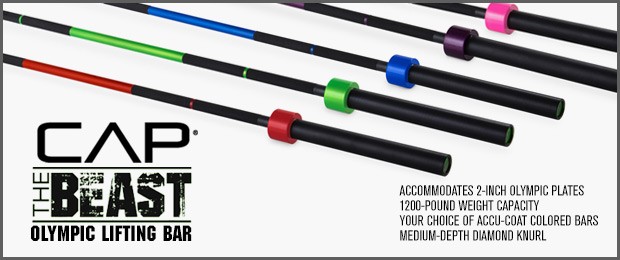
A few years back I wrote an article titled “The Exercise Edition” that shared several of my favorite lesser-known and underutilized exercises. In this article, I'll add some new exercises that we've been using with our athletes to that list. These exercises are ones that we've tested on our athletes and ourselves and we believe in them.
Savickas Press
I was recently contacted by a friend of mine (who also happens to be a former boss of mine) who asked if he should add overhead pressing back into the program for his athletes. My answer was 100% yes. For the young readers, you may not remember a time before 5/3/1 was written, and people (myself included) didn't use as much overhead pressing as we do today. I was mistaken, and the overhead press has become a staple of our programming. There are few lifts that build as much strength as this one lift, so if your athletes are capable of pressing the bar overhead, please have them do it. There is a caveat, though: use variations when needed.
The Savickas press (I call it the "Z Press" in programming) is named after Zydrunas Savickas. If you don't know who Mr. Savickas is, Google him. He’s stronger than you are. Basically, the exercise is an overhead press while seated on the floor. Think of it as the floor press meets the overhead press. This lift will test not only your pressing strength but also your midsection stability. This lift is a great supplementary lift on your pressing days. I tend to use it more for rep work than anything else, as stability can be the limiting factor, not strength, so max effort work or dynamic work don’t seem to suit this lift. I do know some who like to train it heavy; I just wouldn’t recommend it for athletes.
Step-Up to Eccentric
I'm stealing ideas from another popular book. Unless you've been living under a rock, I'm sure you've heard of triphasic training and its many variations. Another mistake I've made endlessly in my career is not using enough eccentric work to have my athletes learn how to decelerate their bodies. Thanks to Cal Dietz, I've learned from my mistakes.
The next evolution of eccentric work is unilateral eccentric work. We can all do a squat eccentrically or even a split squat (which isn't unilateral; it’s bilateral in a different plane of movement). I started adding this exercise in for my athletes a few years back and found that you can see more issues with them as they progress with it. I have a fresh or fatigued athlete perform this exercise, and I've used it in our warm-ups as well as in our triphasic work. You can add a ton of different variations to this: add weight, add a band pulling in any direction, have them switch feet at the top, etc. Use your imagination.
Anti-Rotation and Anti-Extension Exercises
These don't need a ton of explanation because they're all accessory lifts. Use your imagination to add or take away from the difficulty of each of these as you see fit.
Clusters
Yes, I know this is a method, not an exercise, but there are so many different ways to implement clusters that I wanted to touch on them here.
Clusters for Pre-Fatigue
I use this method in a warm-up situation. For example, I have my athletes perform three sets of five dumbbell bench presses with 10 seconds rest. Then they rest 45 seconds and repeat for three to four sets. The weight here is around 60% of what you would be doing if it weren't a cluster. For me, a set of 10 is 100 to 115 pounds, so 60-pound dumbbells for clusters would be appropriate. Obviously, any exercise can be used here. I just picked dumbbell bench because it's easy to implement.
Clusters in Place of Dynamic Work
I’ll use this method when we are doing dynamic effort work without variations for six to eight weeks in a row. With this long of a time period, the athlete will need some change to the stimulus. I’ll use squats as an example here. Instead of a traditional 10 sets of two approach, I may have them do three sets of two as a cluster for three to four sets. This is done similar to my previous example. With multiple athletes, I just have them count the rest periods. So athlete A squats for two reps and racks the bar. Then Athlete B counts to 10 and Athlete A repeats. After three sets of two, the athletes switch positions.
Clusters as a Finisher
I do this similar to the pre-fatigue cluster. I may increase the reps on this so the athlete can get a little pump (or as we call it, "get bumpy"). Again, have them grab a weight that is 60% of what they would use for a non-cluster set and have the athletes do five 10 reps, rest for 10 seconds, and repeat. I want them burning with this method.
No matter how you're implementing clusters, I have a few final thoughts on how to perform them:
- Keep the weight light.
- Move the bar or dumbbell as fast as possible.
- Make sure the athletes waiting to go next have a way to stay engaged while they wait.











Thank you for the kind words. The highlight for me this year was still breakfast with three dudes smarter than I. You B Mann and THE SCOTT CAUFIELD